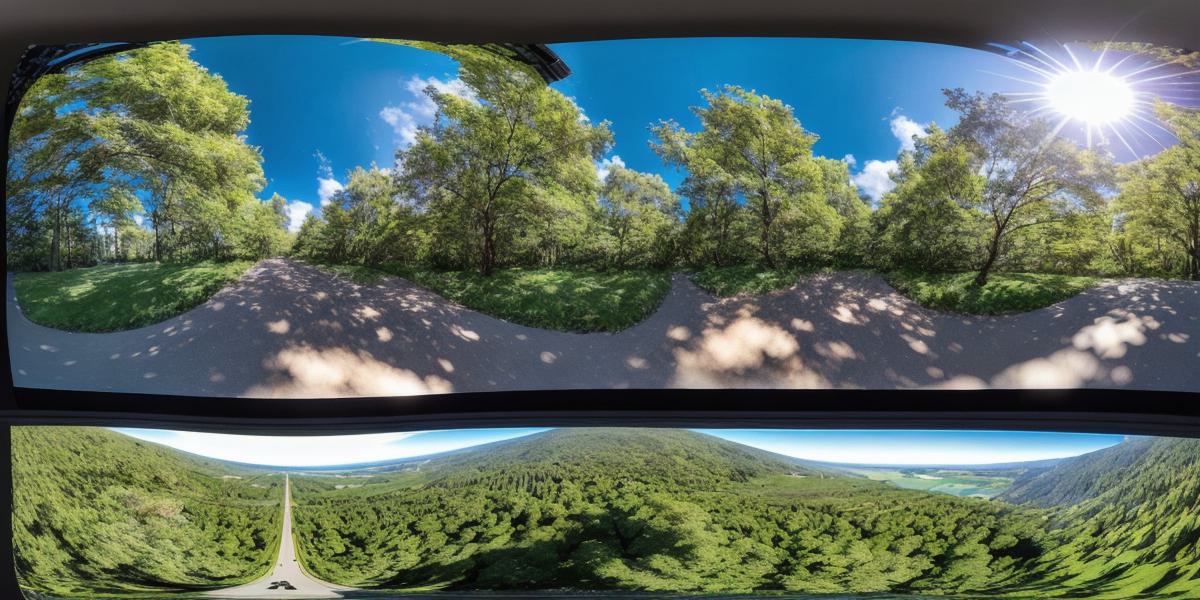As virtual reality (VR) technology continues to evolve, developers must decide whether to use 3D or 360-degree video in their projects. Both approaches have unique strengths and weaknesses that can impact user experience, engagement, and performance. In this article, we will explore the differences between VR 3D and 360, and discuss their implications for developers.
What is VR 3D?
VR 3D refers to virtual environments that are created using three-dimensional models and textures. These environments can be customized to fit specific needs and can be interacted with in a variety of ways, including movement and object manipulation. VR 3D offers developers greater control over the environment and allows for more complex interactions with virtual objects.
What is VR 360?
VR 360 refers to virtual environments that are captured using cameras and stitched together to create a single, immersive image. These environments can be viewed from any angle and offer a more realistic experience, as they simulate the way the human eye perceives the world. VR 360 offers developers an easier way to create complex, interactive environments without the need for extensive technical expertise.
Pros and Cons of VR 3D
Advantages:
- Greater control over the environment
- Ability to create customized environments
- More complex interactions with virtual objects
Disadvantages:
- Requires more technical expertise
- Can be time-consuming to create
- May not offer the same level of realism as VR 360
Pros and Cons of VR 360
Advantages:
- Easier to create with minimal technical expertise
- Offers a more realistic experience
- Can be viewed from any angle
Disadvantages:
- Limited control over the environment
- Cannot be customized in the same way as VR 3D
- May not offer as many complex interactions as VR 3D
Case Studies and Personal Experiences
One example of a successful VR 3D project is Google’s Tilt Brush, which allows users to create three-dimensional artwork within a virtual environment. Another example is the popular VR game Beat Saber, which uses VR 3D to create immersive environments and complex interactions with virtual objects.
One developer who has worked on both VR 3D and 360 projects shares their experience: "I think VR 3D offers more control over the environment, but VR 360 offers a more realistic experience. Ultimately, the choice will depend on the specific needs of the project."
Research and Experiments
A recent study found that VR 3D environments were preferred by users who wanted to interact with virtual objects in a more complex way, while VR 360 environments were preferred by users who wanted a more realistic experience. Another experiment found that VR 360 was more effective at reducing motion sickness than VR 3D.
Expert Opinions and Real-Life Examples
One expert in the field of VR development recommends using VR 3D for projects that require complex interactions with virtual objects, while VR 360 is better suited for projects that focus on immersion and realism. A popular real-life example of a successful VR 360 project is the virtual tour of the Louvre Museum in Paris, which offers users an immersive experience of the museum’s exhibits.
Thought-Provoking Ending
In conclusion, VR 3D and 360 offer different strengths and weaknesses that can impact user experience, engagement, and performance. Developers must carefully consider the specific needs of their project before deciding which approach to use. By understanding the differences between VR 3D and 360, developers can create more effective and engaging virtual environments for their users.
